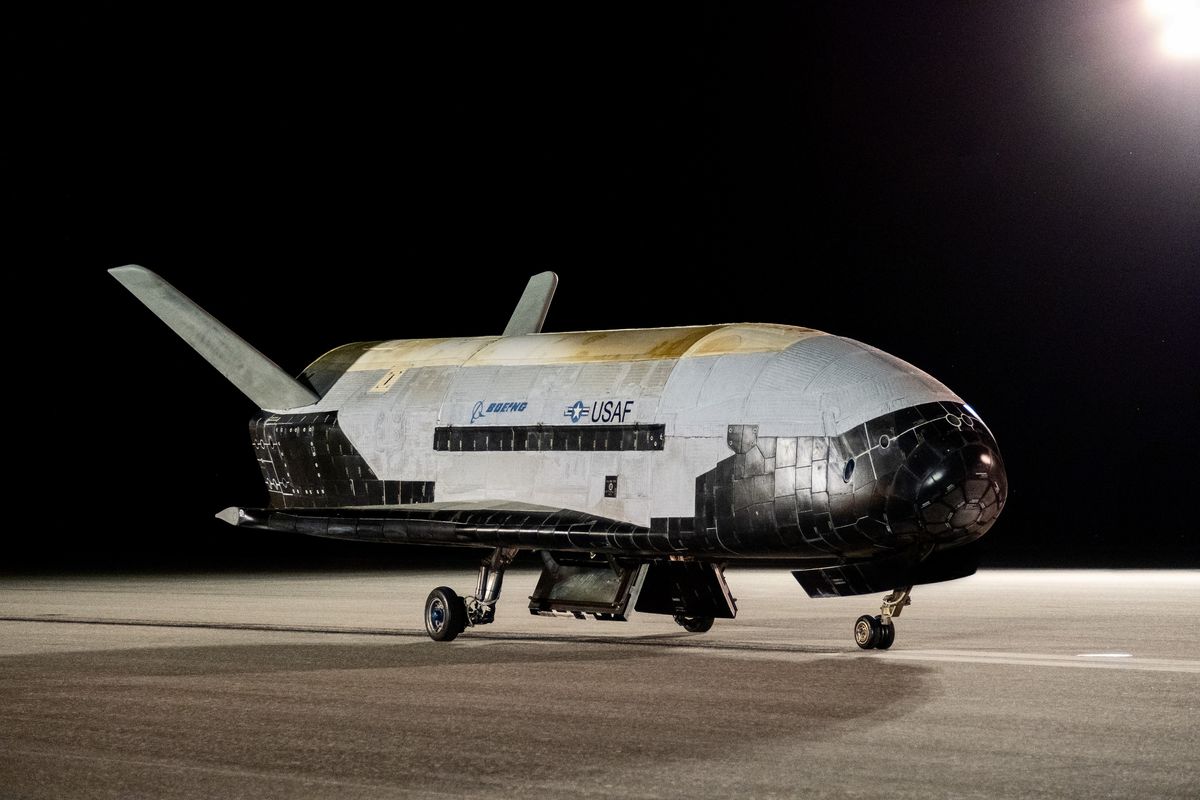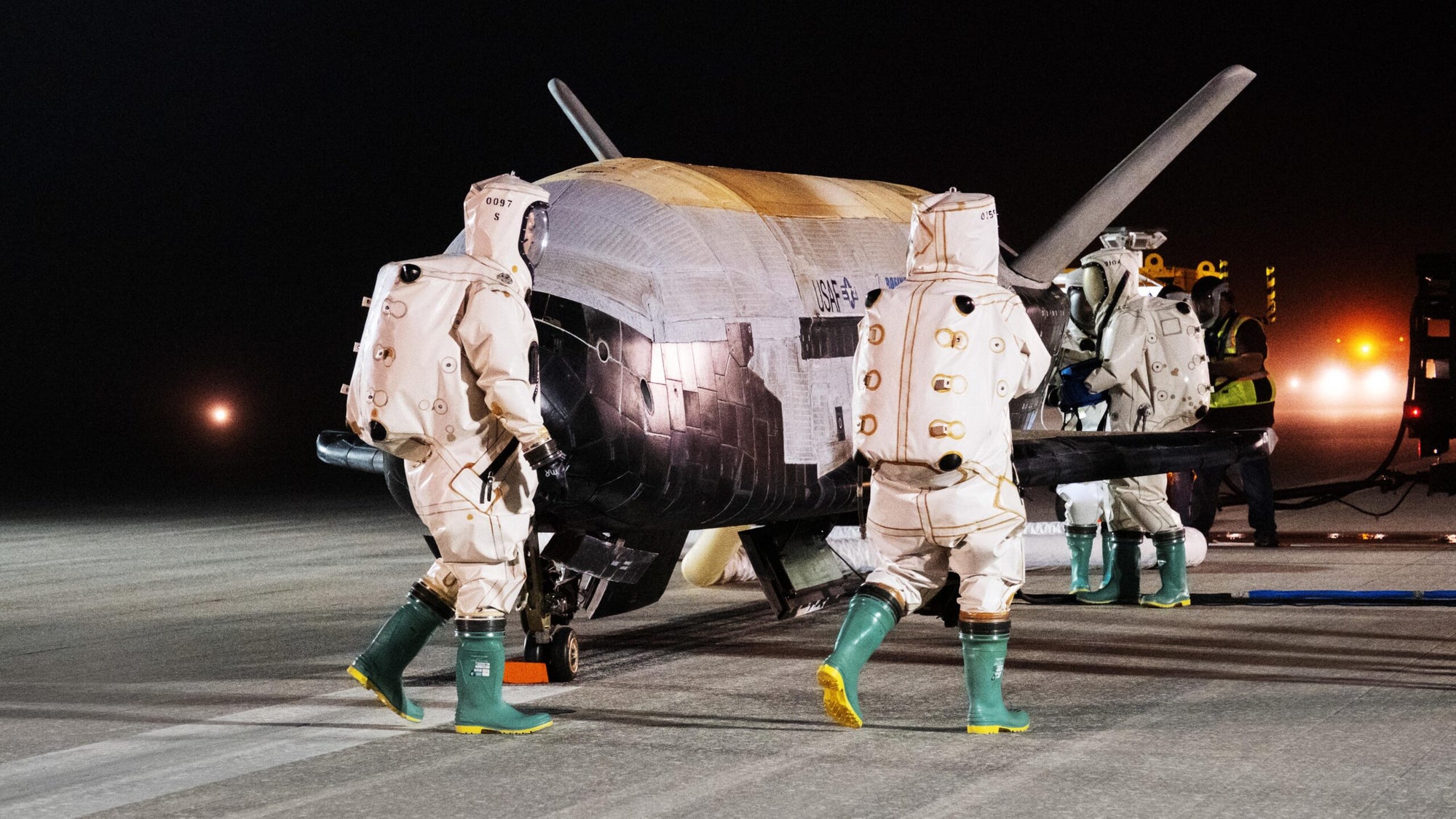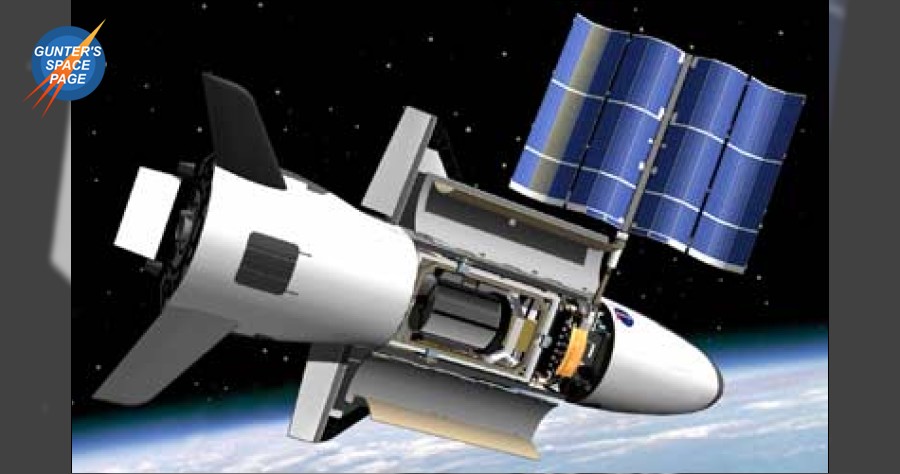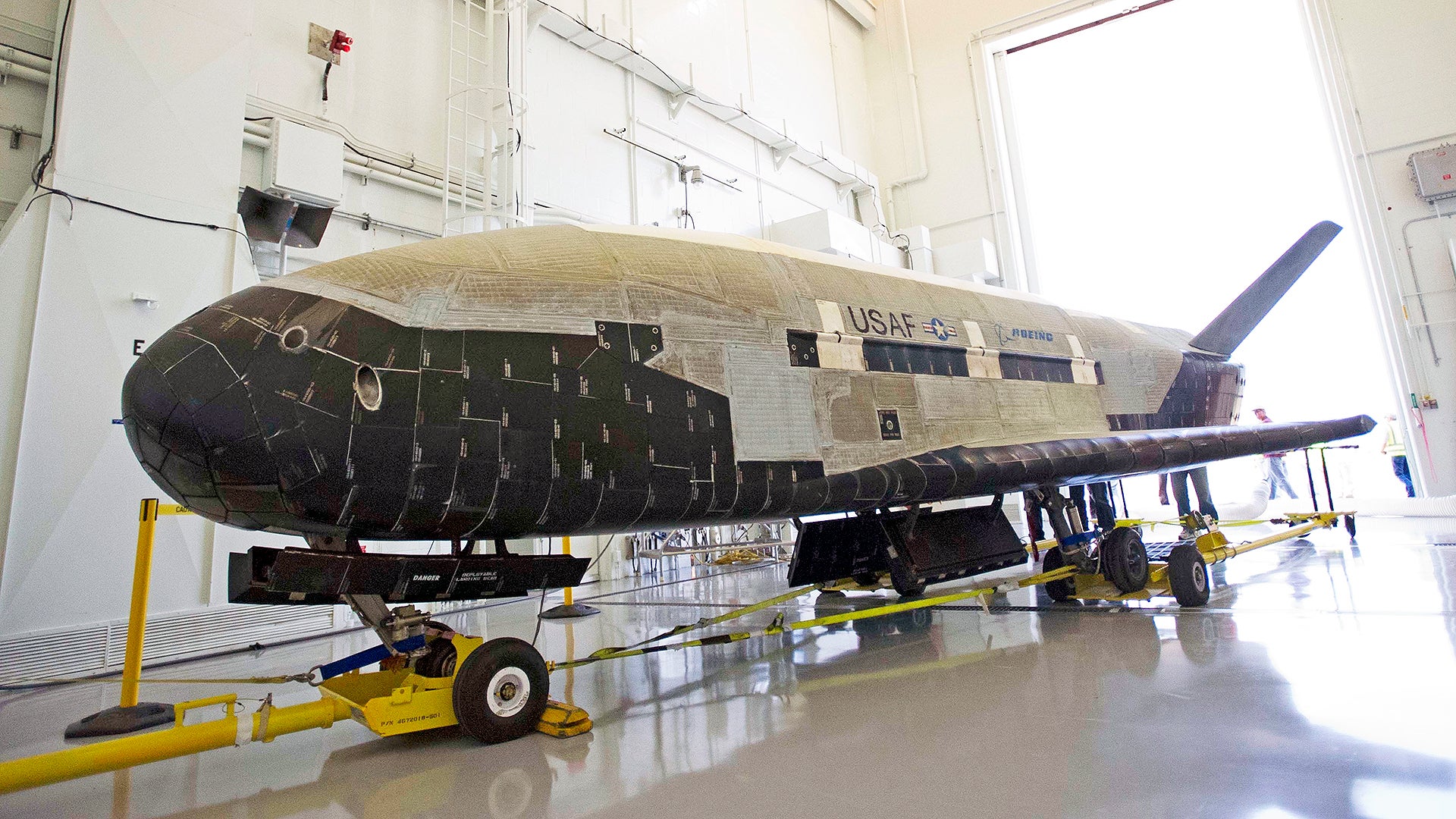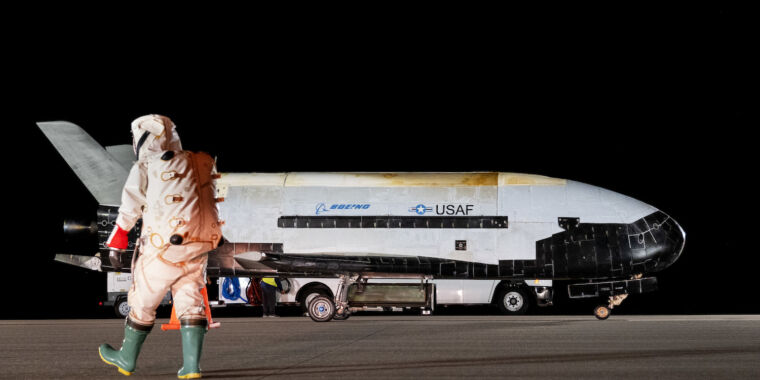X-39
To post or not to post, that is the question
- Joined
- 20 February 2021
- Messages
- 382
- Reaction score
- 928
US military's mysterious X-37B space plane zooms toward orbital record
By Leonard David published 3 days ago
The U.S. military's X-37B robotic space plane is closing in on a mission-duration record.
The X-37B launched to Earth orbit on May 17, 2020 on the sixth mission for the program, a flight known as Orbital Test Vehicle-6 (OTV-6).
The Space Force minishuttle has now been aloft for 773 days. That's just a week shy of the X-37B record of 780 days, which was set on OTV-5. (That program record doesn't come close to the overall mark for an orbital stay; for example, the Landsat-5 satellite observed Earth from orbit for 29 years.
Onboard experiments
While the Boeing-built robotic space plane's primary orbital agendas are classified, some of its onboard experiments were disclosed before launch.
One such experiment, from the U.S. Naval Research Laboratory (NRL), investigates transforming solar power into radio frequency microwave energy. The experiment is called the Photovoltaic Radio-frequency Antenna Module, or PRAM for short.
We also know that OTV-6 included the deployment of FalconSat-8, a small satellite developed by the U.S. Air Force Academy and sponsored by the Air Force Research Laboratory to conduct several experiments on orbit.
In addition, two NASA experiments are tucked onboard the space plane to study the effects of the space environment on a materials sample plate and seeds used to grow food.
OTV-6 is the first X-37B mission to use a service module to host experiments. The service module is an attachment to the aft of the vehicle that allows additional experimental payload capability to be carried to orbit.
Earlier flights
Here's a roster of the previous X-37B missions, each of which lasted longer than its immediate predecessor:
- OTV-1 launched on April 22, 2010 and landed on Dec. 3, 2010, spending over 224 days on orbit.
- OTV-2 launched on March 5, 2011 and landed on June 16, 2012, spending over 468 days on orbit.
- OTV-3 launched on Dec. 11, 2012 and landed on Oct. 17, 2014, spending over 674 days on orbit.
- OTV-4 launched on May 20, 2015 and landed on May 7, 2017, spending nearly 718 days on orbit.
- OTV-5 launched on Sept. 7, 2017 and landed on Oct. 27, 2019, spending nearly 780 days on orbit.
It's unclear when and where OTV-6 will come down to Earth. OTV-1, OTV-2 and OTV-3 landed at Vandenberg Space Force Base California, while OTV-4 and OTV-5 touched down at NASA's Kennedy Space Center in Florida.
Overseeing operations
The X-37B program is flown under the auspices of a U.S. Space Force unit called Delta 9, which was established in July 2020.
"Delta 9 Detachment 1 oversees operations of the X-37B Orbital Test Vehicle, an experimental program designed to demonstrate technologies for a reliable, reusable, unmanned space test platform for the U.S. Space Force," Space Force officials wrote in a Delta 9 fact sheet .
"The mission of Delta 9 is to prepare, present, and project assigned and attached forces for the purpose of conducting protect-and-defend operations and providing national decision authorities with response options to deter and, when necessary, defeat orbital threats," the fact sheet explains. "Additionally, Delta 9 supports Space Domain Awareness by conducting space-based battlespace characterization operations and also conducts on-orbit experimentation and technology demonstrations for the U.S. Space Force."
Vehicle features
The Space Force is thought to have two X-37B vehicles in its fleet, both of which were built by Boeing. The X-37B launches vertically atop a rocket and lands horizontally on a runway, like NASA's old space shuttle orbiter.
The military space plane looks a lot like the now-retired shuttle, in fact, but it's much smaller — just 29 feet (8.8 meters) long, compared to 122 feet (37 m). There's another key difference as well: NASA's shuttle was crewed, whereas the X-37B is robotic.
Boeing has noted that the X-37B features many elements that mark a first use in orbit for a space plane, including fully automated de-orbit and landing functions, flight controls and brakes that use all electro-mechanical actuation (no hydraulics) and a body made of a relatively light composite structure, rather than traditional aluminum.
"The X-37B is one of the world's newest and most advanced re-entry spacecraft, designed to operate in low Earth orbit, 150 to 500 miles [240 to 800 kilometers] above the Earth," Boeing wrote in a vehicle description (opens in new tab). "The vehicle is the first since the space shuttle with the ability to return experiments to Earth for further inspection and analysis. This United States [Space] Force unmanned space vehicle explores reusable vehicle technologies that support long-term space objectives."
The X-37B was designed to fly missions that last up to 270 days, Boeing noted. But every flight except the first has zoomed well past that supposed limit.
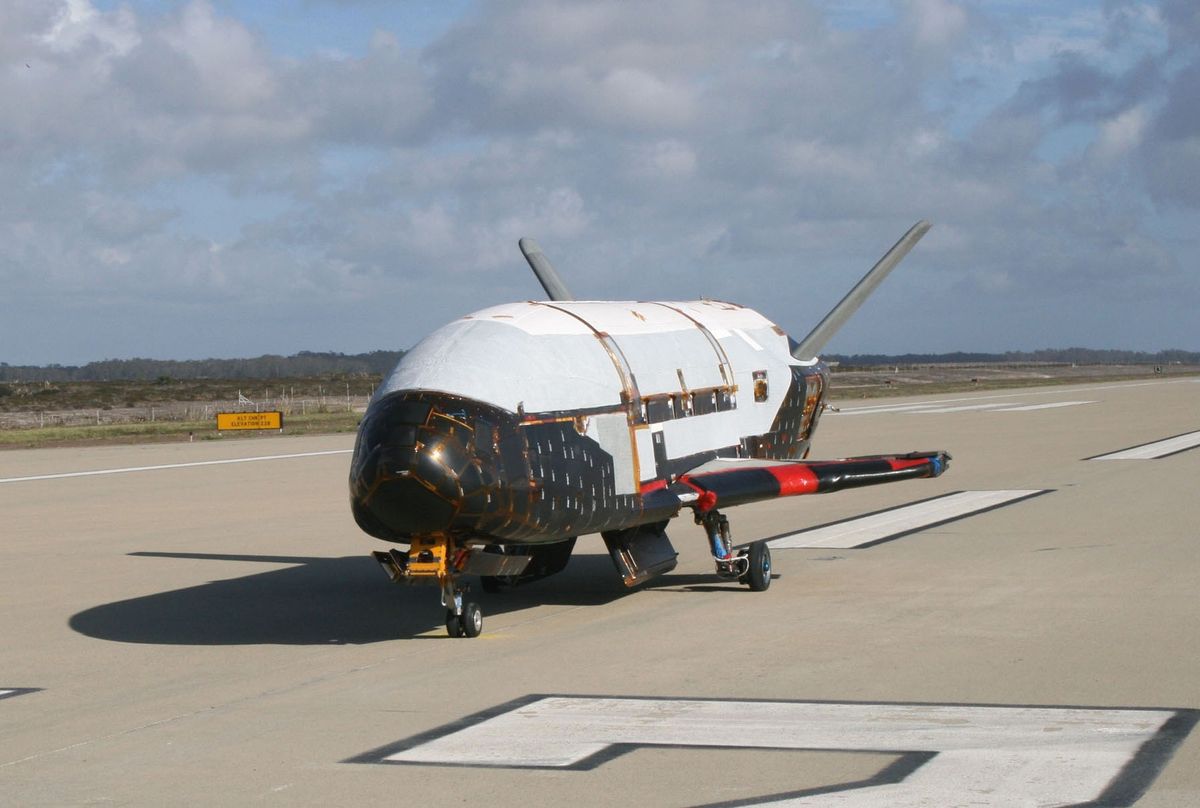
US military's mysterious X-37B space plane zooms toward orbital record
The X-37B is just a week away from setting a new mission-duration mark.

